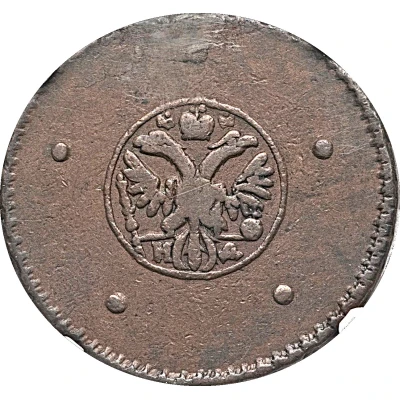5 Kopecks - Ekaterina I Plate money
1726 year| Copper | - | - |
| Issuer | Russian Empire |
|---|---|
| Empress | Catherine I (1724-1727) |
| Type | Non-circulating coin |
| Year | 1726 |
| Value | 5 Kopecks (5 Копеек) (0.05) |
| Currency | Rouble (1700-1917) |
| Composition | Copper |
| Shape | Square |
| Demonetized | Yes |
| Updated | 2024-10-07 |
| Numista | N#102930 |
|---|---|
| Rarity index | 97% |
Comment
Issued between 1725-1727 in various sizes containing copper equal to value of similar denominations of silver coinage. Obviously they copied the format of the Swedish plate money introduced in 1702.Interesting fact
The 5 Kopecks - Ekaterina I (Plate money) 1726 coin from the Russian Empire made of Copper is interesting because it was part of a unique monetary system during the reign of Catherine the Great. The coin was used as a form of plate money, which was a type of currency that was made from precious metals like copper, silver, and gold, and was used as a medium of exchange for large transactions. The use of plate money was a way for the government to control the flow of currency and to prevent counterfeiting. The coin is a rare and valuable collector's item today, and its historical significance makes it an interesting fact for numismatists and history enthusiasts.

